Colour fastness concept and its type analysis Colour fastness is the ability of printed textiles…
Imported Textiles:Mandatory Standards for U.S. Market Entry
For imported textiles, there are relatively sound and comprehensive technical standards and regulations for numerous products issued and established by departments of the federal government in America, most of which are codified in the Code of Federal Regulations (also known as CFR). Some standards for textiles and garments will be introduced as follows:
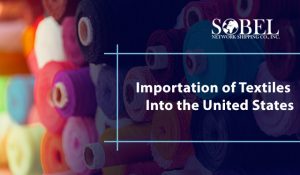
1 Regulation for the Implementation of Wool Products Labeling Act, 16CFR 300
Testing content and requirements: Label inspection
Scope of application: all wool products imported into America. And all wool products imported into America shall be attached with ingredient labels and comply with other provisions proposed in the Wool Products Labeling Act of 1939.
2 Regulations for the Implementation of Fur Products Labeling Act, 16CFR 301
Testing content and requirements: Label inspection
Scope of application: All wool products imported into the United States. And all fur products imported into America shall be attached with ingredient labels and comply with other provisions defined in the Fur Products Labeling Act.
3 Regulations for the Implementation of the Textile Products Labeling Act, 16CFR 303
Testing content and requirements: label inspection
Scope of application: clothing products, handkerchiefs, scarves, bedding, curtains, tents, decorative fabrics, tablecloths, carpets, towels, wipes and dishcloths, ironing board covers and pads, umbrellas and parasols, wadding pads, flags with headers or an area which is larger than 216 in2 (13.9 dm2), upholstery, all fibers, yarns and fabrics, furniture covers, bedspreads and other cover cloths for furniture, blankets, and shoulder towels, sleeping bags.
The scope of excluded items which are listed in the Wool Products Labeling Act of 1939: furniture upholstery padding, decorative tape undergoing stiffening finishing, garment hemming or interlining, carpet backing, carpet underlay or padding, sewing thread and embroidery thread, shoes and footwear textiles, hats, bags, packaging and packaging tape, lampshades, toys, women’s hygiene products, tape cloth, diapers, single-use non-woven products, tapes, pants of the garter, armbands, permanent knotted ties, garters and sanitary belts, diaper liners, coated fabrics.
According to the regulation, it is required that most textiles sold in America shall be attached to the label. They must be labeled to show the name and content of fiber, country of origin, and the identity of the manufacturer or distributor primarily.
4 Textile Garments and Fabrics Maintenance Label,16CFR 423
Testing content and requirements: Maintenance Label inspection
Scope of application: all manufacturers and importers of textile garments and fabrics, including the organizations and individuals responsible for the management or control of the relevant products.
When selling the products, the manufacturers and importers must apply maintenance labels and show the standard maintenance introductions based on the related provisions. Moreover, labels should be marked with ways washing, bleaching, drying, and ironing which fabrics or garments should be applied in, and the warning statements.
Maintenance labels should be positioned in a place where they can be seen or found easily. Additionally, maintenance labels should be attached or fixed to the product and the words on the label should be kept clear in its life span.
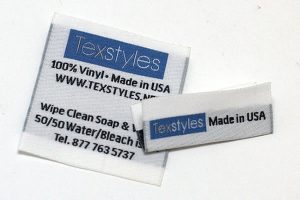
5 Flammability Standards for Clothing Textiles, 16CFR1610
Testing content and requirements: combustion performance
Scope of application: apparel and materials for wearing, but not including hats, gloves, and shoes.
Three levels of combustion performance can be specified as follows.
Level 1: conventional combustion
Textiles that can be graded as Level 1 are as follows.
|
Four situations |
The flame spread time of the textile with a pilling surface is not less than 7 seconds. |
|
The flame spread time of the textile with a flat surface is equal to or more than 3.5 seconds. |
|
|
The flame is too weak to ignite the textile or result in no burning at the bottom of the textile. |
|
|
Flash flame appears on the surface of the textile within 0-7 seconds. |
Level 2: moderately flammable
Textiles with a piling surface: the flame spread time will maintain in 4-7 seconds.
Note: If such kind of textile is used to make clothes, more attention should be paid to the usage for life safety.
Level 3: Fast and violent combustion
Textiles with a flat surface: the flame spread time is less than 3.5 seconds.
Textiles with a pile surface: the flame spread time is less than 4 seconds, and the base fabric will melt or ignite under the effect of fire.This kind of textile is not suitable for the production of a garment.
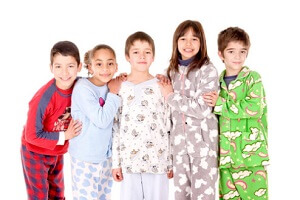
6 Flammability standards of vinyl plastic film, 16CFR1611
Testing content and requirements: combustion performance of a vinyl plastic film
Scope of application: the thickness of the vinyl plastic film is less than or equal to 2.54μm
Five measurements in the longitudinal and vertical direction must be taken to obtain the average combustion performance, which is not allowed to exceed 1.2 inches / s.
7 Flammability standards of children’s sleepwear,16CFR1615 & 16CFR 1616
Test content and requirements: the flammability of children’s sleepwear
Scope of application: 16CFR1615 applies to children’s sleepwear in sizes of 0-6X
16CFR1616 is applicable to children’s sleepwear sizes of 7-14. All ready-to-wear garments or materials used for the children’s sleepwear must comply with the regulations about the fireproof proposed strictly in 16CFR1615 & 16CFR 1616 flammability standards of children’s sleepwear. At first, the sample is hung on the test frame and then burned for 3 seconds after igniting at its bottom. Next, remove the flame and measure the length of the burned part of the sample when the flame is extinguished along the passing of time.
In all, the average carbonation length of 5 samples should not be more than 7 inches. The length of any individual sample can not exceed 10 inches.
8 Standards for Surface Flammability of Carpets and Mats, 16CFR1630
Test content and requirements: combustion performance of carpet and mat
Scope of application: applicable to carpets used in homes, offices, or hotels, not adhered to the floor by taking mechanical means (such as nails), with a one-way dimension larger than 1.83 m and surface area no less than 2.23 m2.
The following are related requirements for samples.
(1) Choose eight samples with 22. 86 cm×22. 86 cm in size. Test them after being balanced. Among these samples, there should be at least seven samples meeting the requirements in accordance with Standards for Surface Flammability of Carpets and Mats.
(2) A sample can be regarded as qualified if the length of the hole on the burned part of a single test sample is within 2. 54 cm.
(3)A report should be made for each mechanism carpet with a one-way dimension up to 22860 m. Besides, for any increase in length with 45720 m, there should be also an additional report. The test report must be provided to the retailer or distributor.
(4) If the carpet or its fiber undergoes flame-retardant finishing, it should be marked with the letter “T”.
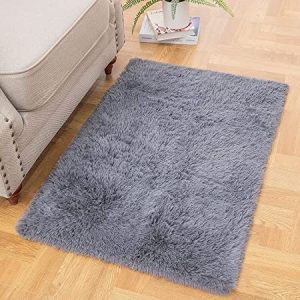
9 Flammability standards of the surface of small carpets and mats, 16CFR1631
Scope of application: carpets with unidirectional size less than 1.83 m and surface area less than 2.23 m2 which can be used in families, offices, or hotels and do not attach to the floor in a mechanical way (such as nails).
Testing content and requirements: the combustion performance of small carpets and mats
(1) Choose eight samples with 22. 86 cm×22. 86 cm in size. Test them after being balanced. Among these samples, there should be at least seven samples meeting the requirements in accordance with Standards for Surface Flammability of Carpets and Mats.
(2) A sample can be regarded as qualified if the size of the hole on the burned part of a single test sample is within 2. 54 cm.
(3)A report should be made for each mechanism carpet with a one-way dimension up to 22860 m. Besides, for every increase in size with 45720 m, there should be also an additional report. The test report must be provided to the retailer or distributor.
(4) If the carpet or its fiber undergoes flame-retardant finishing, it should be marked with the letter “T”. If the small carpet fails to reach the requirement but has been imported into America, it must be marked with a label of flammability (not comply with American Department of Commerce standard FF 2-70: stay far away from the fire source).
10 Standards of flammability performance of mattress, 16CFR 1632
Scope of application: mattresses for adults, young people, and babies (including portable baby mattresses), bunk bed mattresses, water-filled mattresses, air mattresses, sofa mattresses, and so on. But there are also some fabrics excluded, such as sleeping bags, pillow pads, liquid or gas-filled mattress covers, and so on.
Testing content and requirements: mattress combustion performance
(1) firstly measure the nearest burning point in the cigarette. If its charr length in any direction is less than 5. 1 cm, the fabric meets the standard defined in the Standards of flammability performance of the mattress.
(2) products undergoing the flame resistance finishing should be marked on the label with the letter “T”.
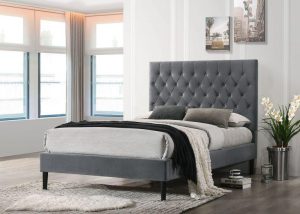
11 flammability standards of mattress and bed set, 16CFR 1633
Scope of application: mattress sets
Testing content and requirements: combustion performance of mattresses and sets of bed furniture
the maximum release rate of heat during the combustion process of the mattress tested should not exceed 200 kW in the test of 30 min. The total release rate of heat should not exceed 15 MJ 10 minutes before the test.
The manufacturer must test at least three samples by applying the prescribed method. And if any sample of them fails to meet the two requirements above, this kind of product will be regarded as unqualified. In addition, the regulation also makes requirements in the aspects of the control of quality, record preservation, label, and so on.
12 Mandatory Standards
16CFR 1500.48 sharp point
16CFR 1500.49 Sharp edges
16CFR 1500.51-53 Abuse testing
16CFR 1501 Small parts testing
Scope of application: children’s textiles and garments
The test content and requirements: physical-mechanical performance test
13 Consumer Product Safety Improvement Act (CPSIA)
Scope of application: children’s textiles and apparel.
Test content and requirements:
Lead and Coating: 90ppm; Substrate: 100ppm
PAEs (DBP, BBP, DEHP, DINP, DIBP, DCHP, DHEXP, DPENP): the content of these PAEs shall not exceed 1000ppm.
Traceability label: Manufacturers of children’s products shall affix to the product and its packaging a unique mark that enables.
(A) the manufacturer to more easily make sure the date, place, batch information (including batch number, serial number, and other identifying information) and other information that identifies the origin of the product.
(B) the end consumer can trace the product’s manufacturer, specific date and place of manufacture, batch information (including batch number, serial number, and other identifying information)
14 California Proposition 65
Scope of application: Halloween costumes (Case No. HG12633575)
Testing content and requirements:
|
constitute |
The content |
|
Soluble arsenic |
≤ 25ppm |
|
Total cadmium which is contained in the parts that can be put into the mouth |
≤ 300ppm |
|
Soluble cadmium which is contained in the parts that can not be put into the mouth
|
≤75 ppm |
|
DEHP, DBP, BBP |
≤ 1000 ppm for each of them |
|
Formaldehyde that is contained in the clothes of 3-year-old or above children |
≤ 75ppm |
|
Formaldehyde that is contained in the clothes of children who are under 3 years old |
≤ 20pp |
|
Coating Lead |
≤ 90ppm |
|
Base material Lead |
≤ 100ppm |
In general, welcome to visit TESTEX for more information about the relevant standards.




This Post Has 0 Comments